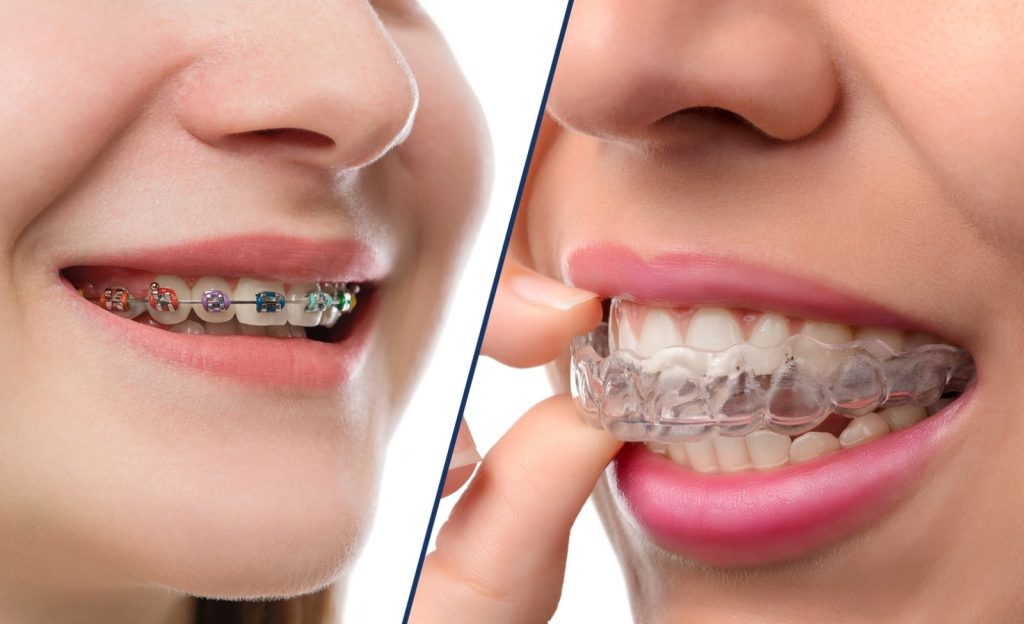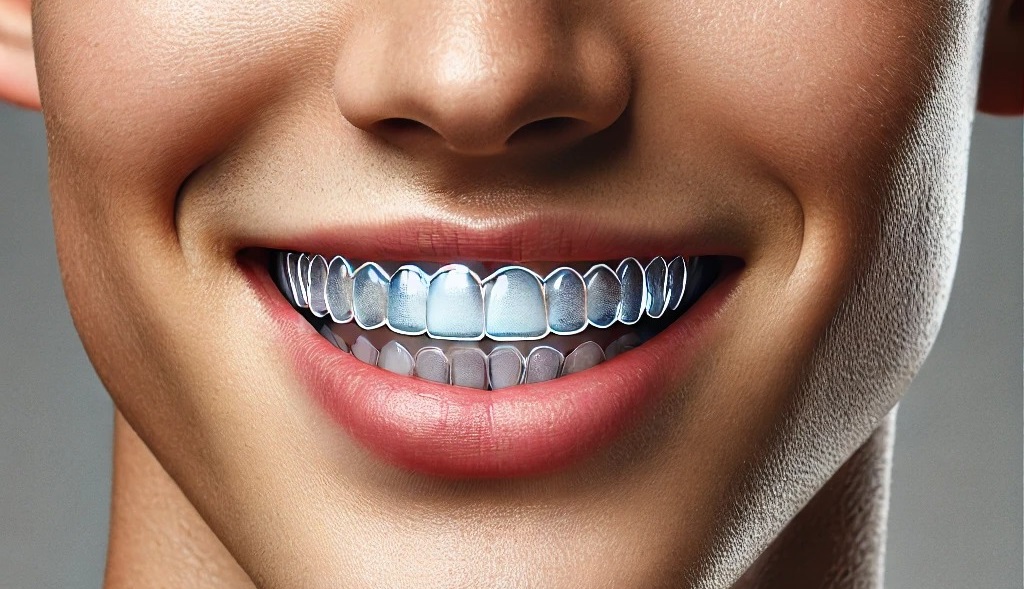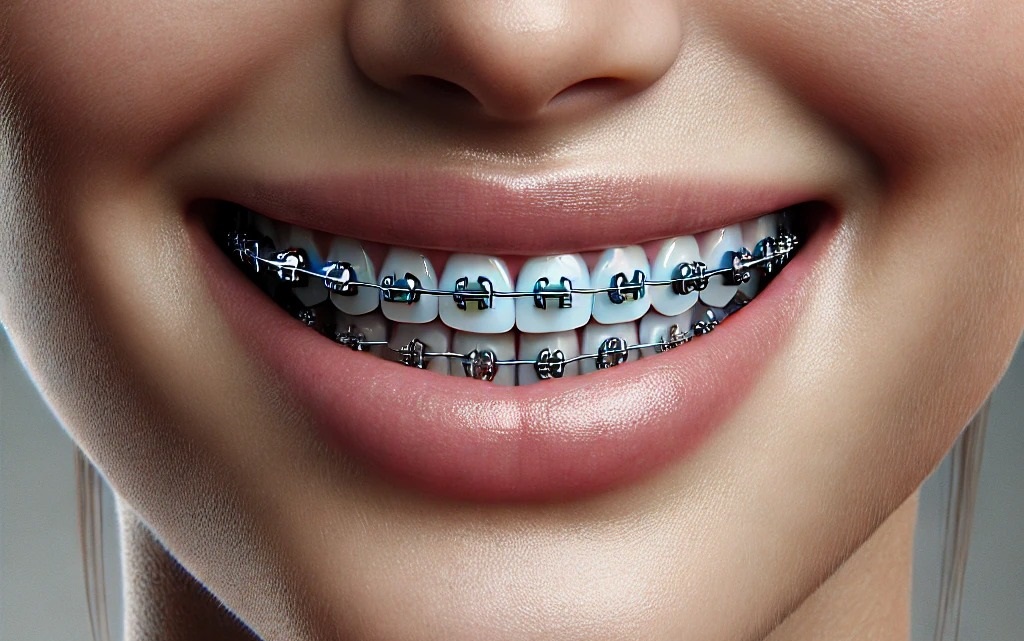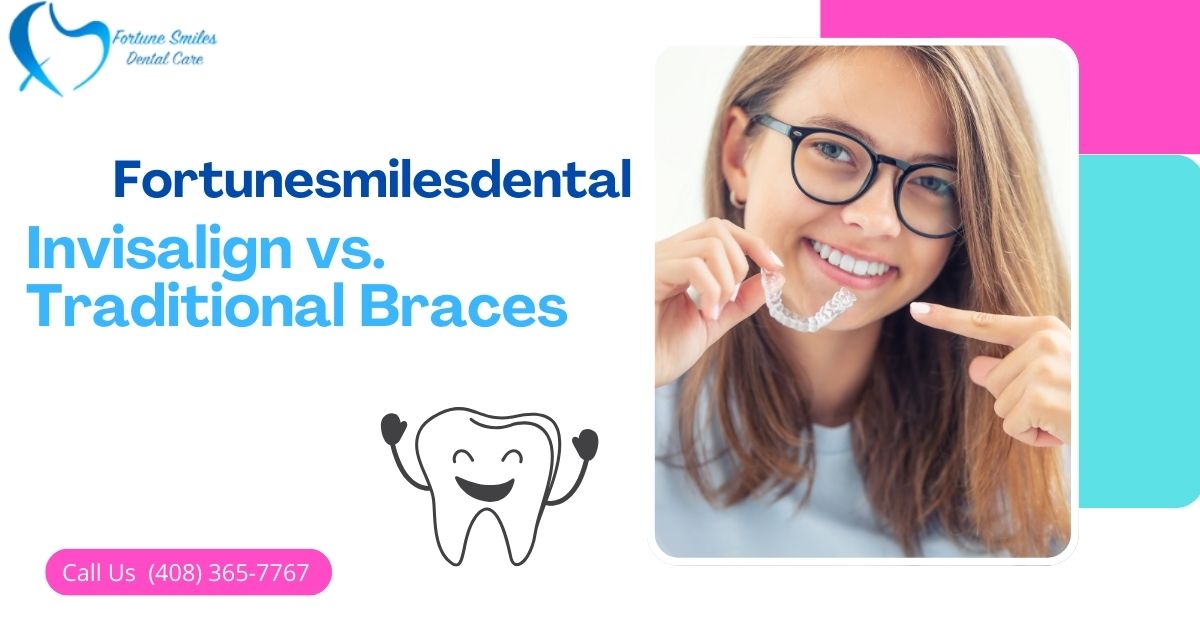Orthodontic treatments have come a long way, offering patients more options than ever to achieve a confident, healthy smile. Two of the most popular solutions today are Invisalign and traditional braces, each with its own set of advantages and considerations.
Whether you’re researching Invisalign near me or wondering about the durability of metal braces, choosing the right treatment depends on your dental needs, lifestyle, and budget.

The decision between Invisalign braces (clear aligners) and traditional braces isn’t one-size-fits-all. Factors like treatment complexity, aesthetic preferences, and cost play a significant role in determining which option suits you best. This article provides a detailed comparison of Invisalign and traditional braces to help you make an informed choice tailored to your unique situation.
Introduction to Orthodontic Treatment Options
Orthodontic care is designed to correct misaligned teeth, improve bite functionality, and enhance overall oral health. Among the leading options, Invisalign—a modern system using clear aligners for teeth—and traditional braces, with their time-tested metal framework, stand out as top choices. Both treatments aim to straighten teeth, but they differ significantly in approach, appearance, and patient experience.
Selecting the right orthodontic solution is crucial for achieving long-term satisfaction. For some, the discreet nature of Invisalign braces is a priority, while others may prefer the reliability of traditional braces for more complex issues. Understanding the basics of each treatment is the first step toward deciding which path aligns with your goals.
What is Invisalign?
Invisalign is a revolutionary orthodontic treatment that uses custom-made, removable clear aligners for teeth to gradually shift them into proper alignment. Patients receive a series of aligners, each worn for about two weeks, designed using advanced 3D imaging technology. This system appeals to those seeking a less noticeable alternative to metal braces.
The benefits of Invisalign extend beyond aesthetics. The aligners are comfortable, with no sharp edges to irritate the mouth, and they’re removable, allowing for easier eating and oral hygiene. For individuals searching for the best Invisalign option, its discreet design and flexibility make it a popular choice among adults and teens alike.

What are Traditional Braces?
Traditional braces consist of metal brackets bonded to the teeth, connected by wires and secured with elastic bands. This system applies consistent pressure to move teeth into their desired positions over time. Despite the rise of alternatives like Invisalign, traditional braces remain a cornerstone of orthodontic care due to their proven effectiveness.
One of the standout features of braces is their durability. They’re built to handle complex dental corrections, such as severe crowding or significant bite issues, making them a go-to solution for challenging cases. For patients prioritizing results over appearance, traditional braces offer a reliable and robust option.
Invisalign vs. Traditional Braces: Key Differences
When comparing Invisalign and traditional braces, several factors come into play, including appearance, comfort, and maintenance requirements. Each treatment caters to different preferences and dental conditions, so understanding these distinctions is essential.
- Appearance: Invisalign braces are virtually invisible, making them ideal for those concerned about aesthetics, while traditional braces are highly visible due to their metal components.
- Comfort: Invisalign aligners are smooth and removable, reducing irritation, whereas braces can cause discomfort from brackets and wires.
- Maintenance: Invisalign allows normal brushing and flossing since aligners are removable, while braces require special tools like floss threaders to clean around brackets.
- Treatment Duration: Invisalign typically takes 6-18 months for mild to moderate cases, while braces may take 18-36 months, especially for complex issues.
- Cost: Invisalign cost often ranges higher ($3,000-$8,000) than braces ($2,500-$6,000), depending on treatment length and provider.
- Suitability: Invisalign works best for mild to moderate alignment issues, while braces excel at treating severe misalignments and bite problems.
These differences highlight why personal priorities—like discretion versus comprehensive correction—matter when choosing between the two.
Invisalign Cost vs. Traditional Braces Cost
Cost is a major consideration for anyone exploring orthodontic options. The Invisalign cost typically falls between $3,000 and $8,000, influenced by factors like treatment duration, the complexity of the case, and geographic location. In contrast, traditional braces generally cost $2,500 to $6,000, though additional expenses (e.g., adjustments or emergency repairs) can increase the total.
Finding affordable Invisalign is possible with some research. Many orthodontists offer payment plans, and dental insurance may cover a portion of either treatment, depending on your plan. Searching for Invisalign near me and comparing quotes from local providers can also uncover cost-effective options tailored to your budget.
Who is the Best Candidate for Invisalign?
Invisalign is ideal for individuals with mild to moderate dental issues, such as minor crowding, small gaps, or slightly misaligned teeth. Its clear aligners for teeth suit patients who value aesthetics and are disciplined enough to wear them for the recommended 20-22 hours per day. Teens and adults with busy lifestyles often find Invisalign braces a convenient fit due to their removability.
However, Invisalign isn’t suitable for everyone. Patients with severe malocclusions, significant bite problems, or teeth requiring vertical movement may not achieve optimal results with aligners. Consulting an orthodontist is key to determining if you’re a candidate for the best Invisalign treatment.
Who Should Choose Traditional Braces?
Traditional braces are the preferred choice for individuals with complex orthodontic needs, such as severe crowding, large gaps, or pronounced bite issues like overbites or underbites. Their fixed design ensures consistent pressure, making them highly effective for cases where precise tooth movement is required.
For younger patients or those unbothered by the appearance of metal, braces offer a practical solution. They don’t rely on patient compliance (unlike Invisalign), and their durability makes them a strong contender for tackling challenging dental corrections over time.

Finding the Best Invisalign Provider Near You
Locating the best Invisalign provider starts with a simple search for Invisalign near me. Look for orthodontists with specialized training in Invisalign treatment, positive patient reviews, and transparent pricing. Many practices offer free consultations, allowing you to discuss your needs and explore affordable Invisalign options.
A qualified provider will assess your dental condition, explain the process, and customize a treatment plan. Choosing an experienced professional ensures you receive high-quality care, maximizing the effectiveness of your Invisalign braces and enhancing your overall experience.
Pros and Cons of Invisalign and Traditional Braces
Weighing the advantages and disadvantages of Invisalign and traditional braces helps clarify which option aligns with your priorities. Here’s a concise breakdown:
Invisalign Pros:
- Nearly invisible, enhancing confidence during treatment.
- Removable for eating, brushing, and special occasions.
- Comfortable with no wires or brackets to irritate the mouth.
Invisalign Cons:
- Higher Invisalign cost compared to braces.
- Requires strict compliance to wear aligners 20-22 hours daily.
- Less effective for severe dental issues.
Traditional Braces Pros:
- Highly effective for complex orthodontic problems.
- Lower cost on average than Invisalign.
- No reliance on patient discipline since they’re fixed.
Traditional Braces Cons:
- Visible metal appearance may affect self-esteem.
- More challenging to clean, increasing risk of plaque buildup.
- Potential discomfort from adjustments and hardware.
These pros and cons underscore the importance of balancing lifestyle preferences, budget, and dental needs when making your decision.
Conclusion: Making the Right Choice for Your Smile
Choosing between Invisalign and traditional braces boils down to your specific circumstances. Invisalign braces offer a discreet, flexible solution for mild to moderate alignment issues, while traditional braces provide unmatched strength for severe cases—all at a potentially lower cost. Keywords like Invisalign cost, affordable Invisalign, and Invisalign near me reflect the practical considerations patients face, but the decision ultimately hinges on what’s best for your smile.
The path to straighter teeth begins with a professional consultation. An orthodontist can evaluate your dental health, discuss treatment options, and guide you toward the solution—whether it’s the best Invisalign or trusty traditional braces—that will leave you smiling confidently for years to come.

